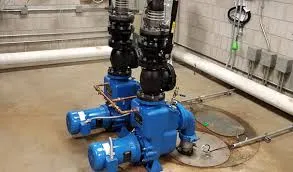igbo
- Afrikaans
- Albanian
- Amharic
- Arabic
- Armenian
- Azerbaijani
- Basque
- Belarusian
- Bengali
- Bosnian
- Bulgarian
- Catalan
- Cebuano
- Corsican
- Croatian
- Czech
- Danish
- Dutch
- English
- Esperanto
- Estonian
- Finnish
- French
- Frisian
- Galician
- Georgian
- German
- Greek
- Gujarati
- Haitian Creole
- hausa
- hawaiian
- Hebrew
- Hindi
- Miao
- Hungarian
- Icelandic
- igbo
- Indonesian
- irish
- Italian
- Japanese
- Javanese
- Kannada
- kazakh
- Khmer
- Rwandese
- Korean
- Kurdish
- Kyrgyz
- Lao
- Latin
- Latvian
- Lithuanian
- Luxembourgish
- Macedonian
- Malgashi
- Malay
- Malayalam
- Maltese
- Maori
- Marathi
- Mongolian
- Myanmar
- Nepali
- Norwegian
- Norwegian
- Occitan
- Pashto
- Persian
- Polish
- Portuguese
- Punjabi
- Romanian
- Russian
- Samoan
- Scottish Gaelic
- Serbian
- Sesotho
- Shona
- Sindhi
- Sinhala
- Slovak
- Slovenian
- Somali
- Spanish
- Sundanese
- Swahili
- Swedish
- Tagalog
- Tajik
- Tamil
- Tatar
- Telugu
- Thai
- Turkish
- Turkmen
- Ukrainian
- Urdu
- Uighur
- Uzbek
- Vietnamese
- Welsh
- Bantu
- Yiddish
- Yoruba
- Zulu
Telephone: +86 13120555503
Email: frank@cypump.com
Sep . 24, 2024 16:06 Back to list
Choosing the Right Sewage Sump Pump for Your Home Drainage Needs
Understanding Sewage Sump Pumps Essential Components for Effective Waste Management
Sewage sump pumps are crucial devices designed to manage wastewater and prevent flooding in residential and commercial properties. These pumps play a vital role in maintaining sanitary conditions by efficiently removing sewage and wastewater from lower areas, such as basements and crawl spaces, and directing it to the municipal sewage system or septic tanks. Understanding the function, types, and maintenance of sewage sump pumps is essential for homeowners and property managers alike.
At its core, a sewage sump pump is installed in a specially designed pit, or sump, located below the ground level. As wastewater accumulates in this pit, a float mechanism senses the water level and activates the pump when it reaches a certain height. The pump then discharges the sewage through pipes to the designated drainage system, ensuring that the area remains dry and preventing potential damage caused by flooding or sewage backup.
There are typically two main types of sewage sump pumps submersible pumps and pedestal pumps
. Submersible pumps are designed to operate while submerged in the wastewater, making them highly efficient and less prone to clogging. They are usually equipped with a sealed motor to protect against corrosion and damage from the harsh conditions in a sewage environment. Pedestal pumps, on the other hand, have the motor mounted above the sump, which keeps it away from the hazardous conditions below. While pedestal pumps are easier to maintain, they tend to be noisier and less efficient than their submersible counterparts.sewage sump pump

In addition to their basic functions, sewage sump pumps can also vary in power and capacity. Homeowners need to select a pump that can handle the volume of wastewater generated in their households. Factors to consider include the size of the home, the number of bathrooms, and the flow rate of the wastewater. Choosing the right pump is crucial for ensuring long-term reliability and effectiveness.
Maintenance of sewage sump pumps is vital to ensure their proper functioning and longevity. Regular inspections should be conducted to check for signs of wear, damage, or blockages. It's important to clean the sump pit periodically to remove any debris that may impede the pump's operation. Additionally, testing the pump by simulating a flooding scenario can help homeowners confirm that it activates and operates as intended.
Another essential aspect to consider is the backup power system. In areas prone to power outages, having a battery backup system can be a lifesaver. This system ensures that the pump continues to operate during emergencies, preventing potential water damage and health hazards associated with sewage spills.
In conclusion, sewage sump pumps are indispensable for effective wastewater management in both residential and commercial settings. Understanding their function, types, and maintenance can help property owners avoid costly repairs and health issues stemming from sewage backups. By investing in a high-quality sewage sump pump and ensuring regular maintenance, homeowners can protect their properties and create a healthy living environment. Whether you're installing a new pump or maintaining an existing one, prioritizing the care of these essential systems will pay dividends in the long run.
-
Heavy-Duty Mining Sludge Pumps - Wear-Resistant Slurry Handling
NewsAug.02,2025
-
Horizontal Split Case Pump with GPT-4 Turbo | High Efficiency
NewsAug.01,2025
-
ISG Series Pipeline Pump - Chi Yuan Pumps | High Efficiency, Durable Design
NewsAug.01,2025
-
Advanced Flue Gas Desulfurization Pump with GPT-4 Turbo | Durable & Efficient
NewsJul.31,2025
-
ISG Series Vertical Pipeline Pump - Chi Yuan Pumps | Advanced Hydraulic Design&Durable Construction
NewsJul.31,2025
-
ISG Series Vertical Pipeline Pump - Chi Yuan Pumps | Energy Efficient & Low Noise
NewsJul.31,2025










